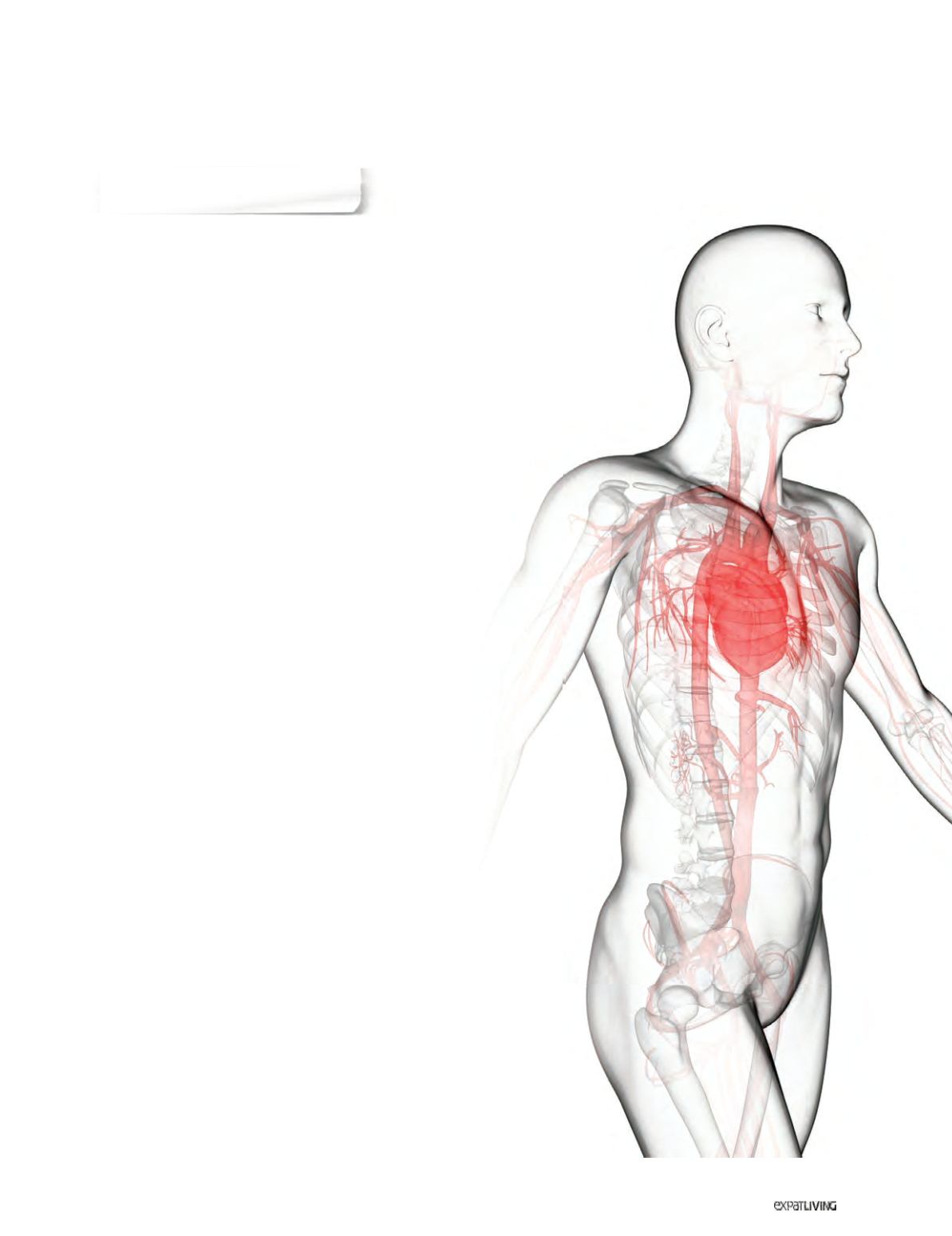

MEN’S HEALTH
267
June15
#3 NEVER IN VEIN
Vascular surgeon DR CHENG SHIN CHUEN explains that his discipline
overlaps with that of the urologist, as a significant number of urology
patients have blockages in the arteries that feed the penis.
Causes of such vascular disease include the usual suspects, he tells
me: smoking, diabetes, high blood pressure and high cholesterol. They
affect the arteries of the entire body system – arteries of the brain (located
in the neck), of the heart, of the gut, the kidneys, the male reproductive
organs and the legs.
“So, as vascular surgeons, we often see people who have difficulty
walking because of blockages to the arteries of the legs – and if you probe
further, you’ll often find problems with erectile dysfunction, too.”
Good news for us all is that technological advances now mean that
minimally invasive methods can be used to treat arterial blockages. “Those
big ops that require long hospital stays are no longer necessarily; usually,
you’ll just stay overnight for observation,” says Dr Cheng.
In my interview with urologist Dr Simon Chong, he mentioned a group
of patients for whom medications for ED don’t work; Dr Cheng explains
that in these cases, the arteries of the penis are blocked. The solution?
“I’ll balloon those blocked arteries to improve blood flow and thus solve
the problem.”
It’s not quite as easy as it sounds, he says, as the artery that supplies
the penis – a branch of the internal iliac artery – is located rather deep.
Luckily, vascular surgeons like himself have the necessary skills from
years of treating blocked leg arteries, and the same principle is at work
here. “It’s is just a subset of leg artery ballooning, and we’ve had good
results. The thing is, it addresses the cause of the problem and eliminates
the need for ED medication.”
Pacific Health has a special facility for this sort of procedure, its
Interventional Procedure Roomon Level 12 of Paragon. For those who have
no severe medical problems, the treatment can be done as an outpatient
day surgery, making for convenience and saving on costs.
Venous leak – eek!
It’s obvious that for an erection to occur, you need blood to go into the
penis and stay there for some time; venous leak occurs when the veins
aren’t working so well and allow blood to leak back into the vascular system.
Dr Cheng explains how this is treated: After identifying the faulty veins,
a catheter is used to insert metallic coils into the faulty vein in order to
block it and slow down the flow of blood from the penis. Because a vein is
not a high-pressure system like an artery, the bleeding risk is low, he says.
A leg to stand on
Back on the subject of leg arteries, Dr Cheng tells me that many men
wrongly regard varicose veins as “a women’s disease”, and think that the
treatment for them is mainly cosmetic.
“Men don’t seek help in time,” he says, “because they don’t see it as a
medical issue. As a result, they come to me only after complications have
arisen, like ulceration, infection, superficial vein clots and severe bleeding.
Once the skin is permanently damaged in this way, there’s no treatment
to reverse that damage.”
The message is clear: get treatment for your varicose veins earlier rather
than later. It is a medical issue, and that’s why it’s reimbursable by many
insurance companies.



















